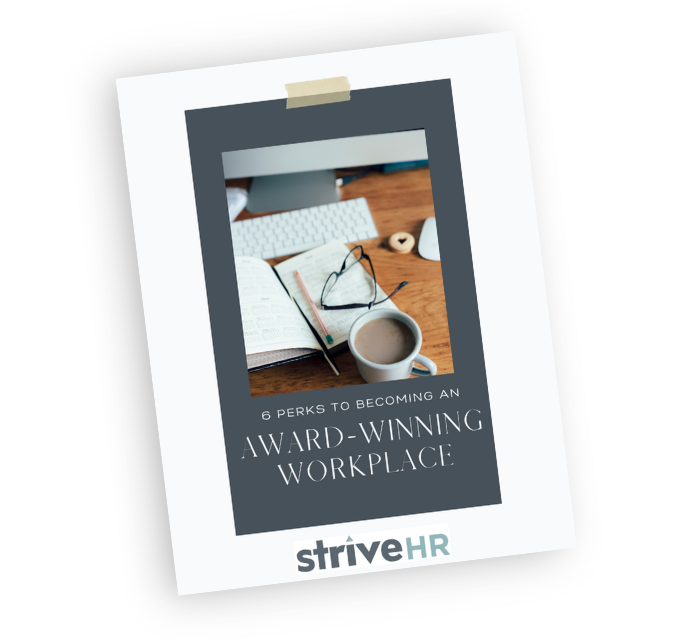Engagement survey preparation is more than checking a box. It’s your opportunity to set the tone for honest, helpful feedback. But too often, surveys are rushed, under-communicated, or treated like an annual task. Behind every survey response is a person with expectations, experiences, and opinions that shape how they’ll answer.
What if the real difference-maker isn’t the survey itself, but the conversation you have before your employee engagement survey even opens?
When done well, these pre-survey conversations can build trust, strengthen participation, and improve the quality of feedback you receive.
Why Setting the Stage Builds Better Trust
Employees are more likely to respond thoughtfully and candidly to surveys when they understand why you’re gathering feedback. When the process feels disconnected, unclear and without purpose, skepticism creeps in. Employees begin to think: “What’s the point?” or “Will anything actually change?” or worse yet, “Are they even listening to what we are saying?”
A well-framed pre-survey message turns a transactional request into a shared opportunity. It says: We’re listening, and we want to do something with what we hear.
Also, when you clearly communicate that the survey is anonymous, and that responses will be aggregated and cannot be tied to individuals, it reassures employees that their honesty is protected. That simple clarity builds confidence and trust before the survey even begins.
The Conversation HR Should Have with Leadership First
Before anything is sent to employees, HR and leadership should align around the why behind the survey and most importantly, connect the why to the broader strategic goals of the organization.
Your why could be a number of reasons: Maybe you’re looking to improve retention and want to understand what’s encouraging employees to stay with your organization. Or, you’re hoping to uncover what’s fueling (or hindering) engagement across departments. Perhaps you’re gearing up to apply for a workplace award and need a clear view into your employee experience. You could also be focused on strengthening communication and connection in the face of change.
When you tie the survey’s purpose to the strategic direction of the organization, it becomes easier for everyone, especially leadership, to rally around it. They begin to see it not just as an HR initiative, but as a business tool that supports the goals and strategic direction of your organization.
Without this alignment, survey results can lose momentum quickly—especially if leaders don’t understand how the insights connect to their goals. A few alignment questions to ask:
- What are we hoping to learn?
- What will we do with the insights?
- How will this connect to our people strategy and business goals?
What to Say to Employees Before You Ask for Feedback
Once your leadership team is aligned, the next step is notifying your employees. Don’t assume employees will understand what the survey is or why it matters. It’s your job to explain this in a way that is meaningful.
Here are a few things to communicate upfront:
- Why you’re gathering feedback – Be clear and authentic.
- What you plan to do with the results – Set expectations around action and follow-through.
- Anonymity matters – Let them know responses are confidential and cannot be tied back to individuals.
- How their input shapes decisions – Emphasize their voice has influence.
- What happens next – Share the timeline for results and next steps.
Organizations should also set a participation goal before the survey launches. This is key as it creates a clear benchmark for success and reinforces the importance of hearing from as many voices as possible. At striveHR, we recommend aiming for at least an 85% participation rate to ensure your results reflect your full employee experience.
Want to learn more? Check out the striveHR blog: The Importance of Participation Rates in Engagement Surveys.
These messages can come from HR or be cascaded by managers during team meetings, huddles, or in 1:1s. The more consistent and genuine the message, the better.
Making Your Culture Story Clear Before the Survey Reflects It Back
Keep in mind that your culture already exists. Your survey won’t create the culture; it will simply reflect it.
That’s why HR and leadership should encourage open feedback. This isn’t something you do because you are conducting an engagement survey but actions that are already part of your environment at your organization. Encourage intentional check-ins and 1:1s. Use team meetings to celebrate wins and acknowledge challenges. Don’t underestimate the value of informal conversations because those impromptu chats by the coffee station or quick hallway check-ins often carry the most weight.
Use these moments to remind employees that their everyday experience matters, not just their survey response. As you observe how communication is flowing from team to team, notice if open conversations and feedback are encouraged and pay attention to whether feedback is genuinely welcomed. And ask yourself: Is there alignment between the culture you describe and what employees are actually experiencing?
When employees feel heard before the survey, they’re more likely to trust the process during and after it.
Don’t Forget the Follow-Up: Sharing Results Is Part of the Culture Conversation
One of the most important steps in building trust around engagement surveys is gathering the insights and determining next steps.
After the results come in, communicate them. Share key takeaways. Let employees know what you learned and what you’re working on as a result. Then, commit to the work ahead.
Even if every issue can’t be solved right away, being transparent about the findings and the plan shows your people that their voice matters. If ideas shared can’t be implemented, be honest with your employees and educate them as to why. When this honest and transparent feedback occurs, you are creating a safe space to encourage continuous ideation going forward. When employees see their input acknowledged and see you taking meaningful steps based on that feedback, they’re more likely to stay engaged and contribute again next time.
Conclusion: Culture Doesn’t Start with a Survey. It Starts with the Conversation
The best surveys aren’t just data collection tools. They’re trust-building moments.
When you take the time to align your leadership, communicate with clarity, and invite employees into the conversation early, you’re doing more than setting up a survey. You’re laying the foundation for a culture that listens, responds, and grows.
And that’s the kind of culture people want to be part of.
Want to build trust before your next employee engagement survey? Download our free guide, 5 Ways to Gather Employee Engagement Data, and learn how to collect meaningful feedback your people feel good about sharing.




